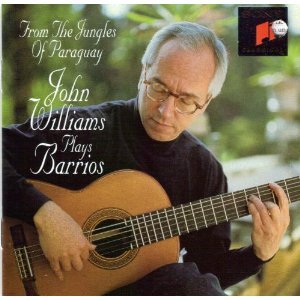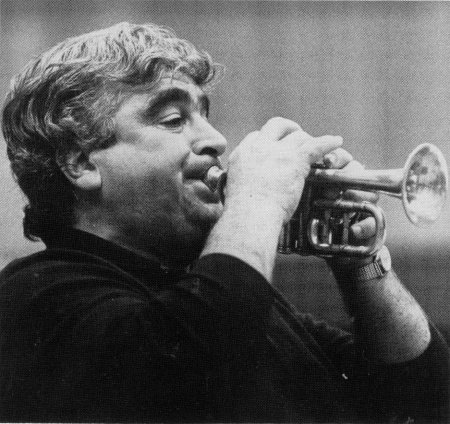Music
I love to play and listen to music.
Apple Airpods and an Apple Music subscription are my new best friend for listening to music. My son tells me I look like a dork with the Airpods, but I don’t care. I’ve got tunes.
Here are some tunes I’ve been listening to lately. Maybe there’s something here you’d like too.

Tres Mambos
German Brass just released an album, Brass Hommage, and this tune, Tres Mambos, really grabbed me. You see, the German Brass members have day-jobs related to symphonic orchestra style of music. Other than the opening selection (Also Sprach Zarathustra), this doesn't sound like an album a bunch of orchestral players would put together.
And their performance on this tune is incredible. Well-played, and it sounds like they’re having lots of fun with this music.
Isn’t that what it’s all about? Great album. Highly recommended.

Transcendental Reunion
Singing the airport blues this week. I traveled to Chicago for a conference, which was great, but bad weather got me coming and going. What should’ve been a quick-n-easy flight turned into an epic ordeal. Twice!
My dad always said that people who travel for a living earn their money in the airports.
This odyssey reminded me of a Mary Chapin Carpenter song, Transcendental Reunion, which relates her thoughts on air travel and humanity. Beautiful song I hadn’t thought about for a while.

Very young composers
The New York Philharmonic recently performed compositions by Camryn Cowan and Jordan Millar, 11-year old participants in the Very Young Composers program organized in New York City. An article in the NY Times includes recordings of these performance in Central Park.
“People ask whether I’ve found the next little Mozart, and I say yes, I’ve found dozens of them. They’re all over the place. We just need to listen to them.”Jon Deak, associate principal bassist of the New York Philharmonic and founder of its Very Young Composers initiative
It’s great to see a symphony orchestra organization reach out to the community to involve young people in music.

La Catedral
I’ve been listening to some classical guitar recordings lately, including my favorite, La Catedral, performed by guitarist John Williams and composed by Agustín Barrios Mangoré (a.k.a., Barrios). Here’s how Williams described the composer:
“Barrios is increasingly appreciated today as the outstanding guitarist-composer of his time, I would say of any time, for the qualities of inventiveness and obvious love of the instrument… As a guitarist/composer, Barrios is the best of the lot, regardless of era. His music is better formed, it’s more poetic, it’s more everything! And it’s more of those things in a timeless way.”John Williams

Adagio, from Telemann Concerto in D
This has been a long-time favorite of mine: Maurice André playing the first movement from the Telemann Concerto in D for trumpet.
I’ve been listening to different renditions of this piece since I was a teenager. Even hired a trumpeter to play it at my wedding—couldn’t get Maurice, though.
Nobody played it better than M. André, and I never get tired of hearing it.

Manhattan Moon
Here's a nice tune from an artist I'd never heard of before: Manhattan Moon, from Lucy Kaplansky. This tune came up on an Apple Music playlist I was listening to—a great way to discover new music.
Kaplansky is a folk singer. Her musical style reminds me of Shawn Colvin a bit, though Kaplansky’s voice sounds different. In addition to being a fine singer, she also plays guitar, mandolin and piano, and she has a PhD in clinical psychology. Quite a lady.
After hearing this tune, I downloaded the album, Over the Hills. Nice tunes.

Farewell to Stromness
Peter Maxwell Davies composed this piece in 1980 as a piano interlude within a larger work called The Yellow Cake Review. Davies wrote it to protest plans to mine yellowcake uranium discovered near the small town of Stromness, located in the Orkney Islands, Scotland, near where he lived.
The uranium-mining plans fell through—I guess the protest worked—but this beautiful tune lives on in many different arrangements. It begins at a slow walking pace, which some reviewers speculate is a musical portrayal of survivors trudging out of Stromness after a nuclear contamination.
I recently heard this piece performed by David Russell at a classical guitar concert in Spivey Hall. I haven’t found a recording of his rendition yet, but there are others I like too. Here’s one by trumpeter Alison Balsom, and here’s another by the LA Guitar Quartet.

West End Blues
This 12-bar blues classic was composed by King Oliver and first recorded by him in 1928. The title refers to the west end of Lake Ponchartrain, near New Orleans, where Oliver lived before moving to Chicago in 1918.
The most famous recording, and my favorite, was by Louis Armstrong and his Hot Five Orchestra on June 28, 1928, just a few weeks after Oliver’s recording. Armstrong was a giant of jazz and in fine form on this recording. He played the opening cadenza with such brilliance and ease, and to this day, even the finest pros struggle to match it.
Though the quality of the recording doesn’t hold up to modern technology, the performance is so amazing that I still love to listen to it.

Pictures at an Exhibition
This is a fairly popular work in the orchestral repertoire, and it’s performed on a regular basis. So why list it here?
Because this particular recording is so special. It’s a recording of a live performance by the Chicago Symphony Symphony Orchestra, conducted by Georg Solti, at the BBC Proms in London on September 4, 1981. The musicians were playing their hearts out, and the performance was electric.
Symphony orchestras don’t play this loud-and-strong anymore. Even at the time, styles were evolving toward the more restrained approach we hear today. This recording is like a time capsule from the heyday of the big Chicago sound.

Habana del Este
This tune is from the album A Toda Gusta de Cuba, by the Afro-Cuban All Stars.
The album was organized in 1996 as a gathering of famous Cuban musicians, most of them old-timers who had been performing on the Cuban music scene since the 1940s and 1950s.
This tune is a tribute to the Matanzas region east of Havana where this musical style was born.
I like this album because it’s another time capsule of great performances by famous musicians. The album shows that Cuban music isn’t just one style—lots of diversity.